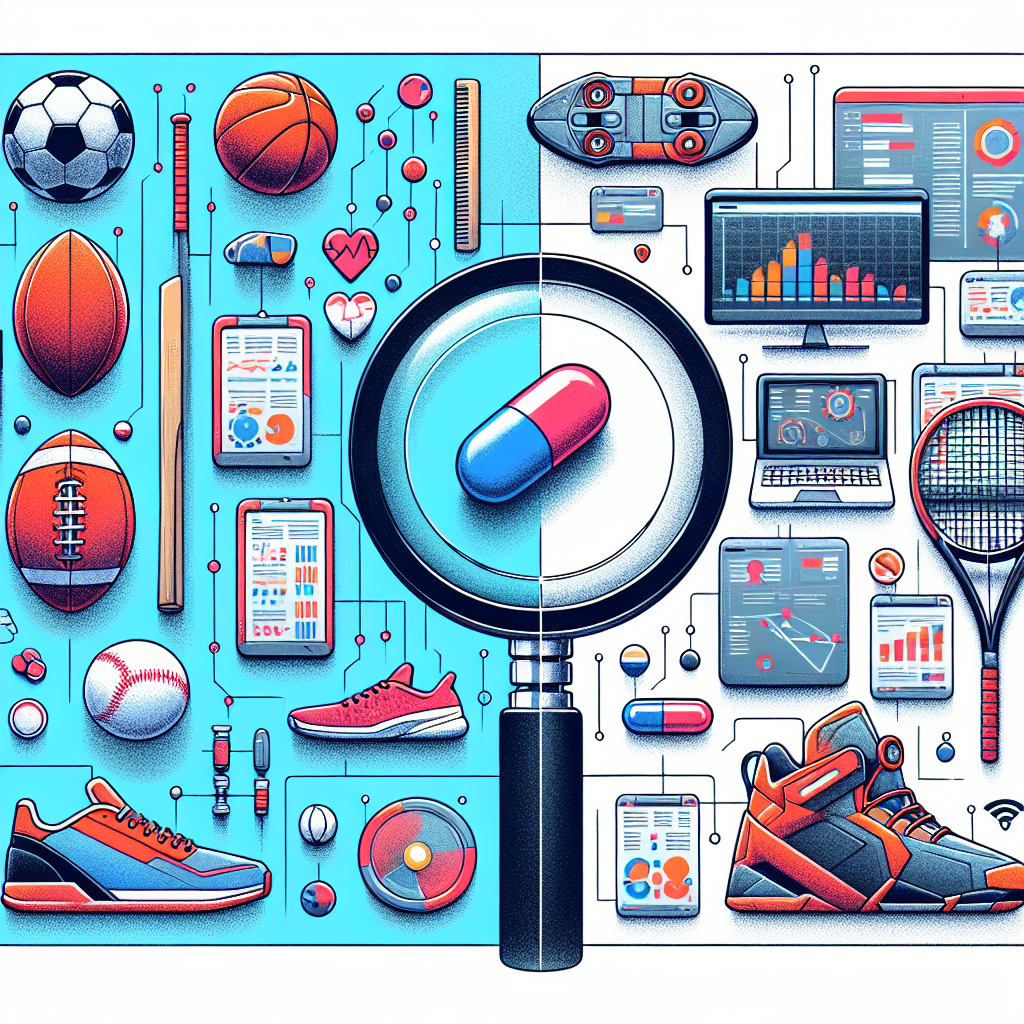Artificial intelligence (AI) has made significant advancements in various industries, including sports. One area where AI is being utilized is in the detection of performance-enhancing drugs (PEDs) in sports. With athletes constantly seeking ways to gain a competitive edge, the use of PEDs has become a major concern in the world of sports. Traditional methods of drug testing have limitations, and AI offers a more efficient and accurate way to detect PEDs in athletes.
The use of PEDs in sports has been a controversial issue for many years. Athletes who use these substances are able to enhance their performance, gain a competitive advantage, and achieve better results in competitions. However, the use of PEDs is not only unethical but also poses serious health risks to athletes. For these reasons, organizations such as the World Anti-Doping Agency (WADA) have implemented strict rules and regulations to combat the use of PEDs in sports.
Traditional methods of drug testing involve collecting urine and blood samples from athletes and analyzing them for the presence of banned substances. While these tests are effective to some extent, they have limitations. For example, some PEDs are difficult to detect using traditional methods, and athletes may use masking agents to avoid detection. Additionally, the process of collecting and analyzing samples is time-consuming and expensive.
This is where AI comes in. AI technology can analyze vast amounts of data and identify patterns that may indicate the use of PEDs. By using machine learning algorithms, AI can detect subtle changes in an athlete’s performance that may be indicative of drug use. AI can also analyze an athlete’s biological markers, such as hormone levels and metabolic profiles, to detect the presence of banned substances.
One of the key advantages of using AI for drug testing in sports is its ability to process data quickly and accurately. AI algorithms can analyze large datasets in a fraction of the time it would take a human analyst. This means that athletes can be tested more frequently, reducing the likelihood of them being able to cheat the system. Additionally, AI can detect patterns and anomalies that may not be obvious to human analysts, increasing the chances of catching athletes who are using PEDs.
Another advantage of AI in drug testing is its ability to adapt and learn over time. Machine learning algorithms can be trained on large datasets of known drug users to improve their accuracy and efficiency. This means that as new PEDs are developed, AI algorithms can quickly adapt to detect them. This adaptability is crucial in the fight against doping in sports, as athletes are constantly seeking new ways to cheat the system.
In recent years, several organizations have started to use AI technology for drug testing in sports. For example, the International Olympic Committee (IOC) has partnered with AI companies to develop new methods for detecting PEDs in athletes. These initiatives have shown promising results, with AI algorithms being able to detect banned substances with high levels of accuracy.
Despite the potential benefits of using AI for drug testing in sports, there are also challenges and concerns that need to be addressed. One of the main concerns is the ethical implications of using AI to monitor athletes. Some critics argue that AI technology may infringe on athletes’ privacy rights and lead to false accusations of doping. It is important for organizations to establish clear guidelines and protocols for the use of AI in drug testing to ensure that athletes’ rights are protected.
Another challenge is the cost of implementing AI technology for drug testing in sports. Developing and maintaining AI algorithms can be expensive, and not all organizations may have the resources to invest in this technology. However, the long-term benefits of using AI for drug testing, such as a level playing field for all athletes and a cleaner sports environment, may outweigh the initial costs.
In conclusion, AI technology has the potential to revolutionize the detection of performance-enhancing drugs in sports. By analyzing vast amounts of data and identifying patterns that may indicate drug use, AI can provide a more efficient and accurate way to catch athletes who are cheating the system. While there are challenges and concerns that need to be addressed, the benefits of using AI for drug testing in sports are clear. As technology continues to advance, we can expect to see AI playing an increasingly important role in ensuring fair play and integrity in sports.
FAQs:
Q: How does AI detect performance-enhancing drugs in athletes?
A: AI technology analyzes vast amounts of data, including an athlete’s performance metrics, biological markers, and historical data, to detect patterns that may indicate the use of PEDs. Machine learning algorithms can identify subtle changes in an athlete’s performance that may be indicative of drug use.
Q: Is AI more accurate than traditional drug testing methods?
A: AI has the potential to be more accurate than traditional drug testing methods, as it can analyze data quickly and identify patterns that may not be obvious to human analysts. However, more research is needed to validate the accuracy of AI technology in detecting PEDs in athletes.
Q: Are there concerns about the use of AI for drug testing in sports?
A: Some concerns have been raised about the ethical implications of using AI to monitor athletes, as well as the cost of implementing this technology. It is important for organizations to establish clear guidelines and protocols for the use of AI in drug testing to address these concerns.
Q: What are the benefits of using AI for drug testing in sports?
A: The benefits of using AI for drug testing in sports include increased efficiency, accuracy, and adaptability in detecting PEDs in athletes. AI technology can help ensure a level playing field for all athletes and maintain the integrity of sports competitions.

